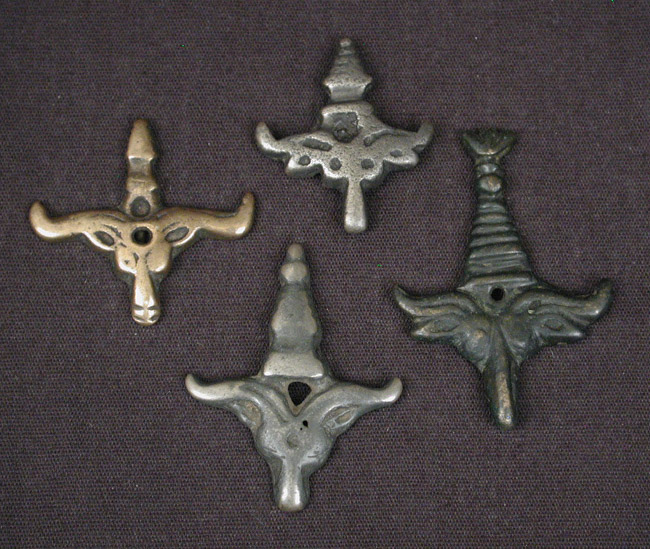previous image || Metal and Stone Vestiges main article || next image
Metal
and Stone Vestiges
Religion, Magic and Protection in the Art of Ancient Tibet
Image 17d
Analogous types of tabernacles and shrines are found in thokcha art as well. In this particular genre they occur resting between the horns of sheep. It would seem that they were manufactured during the early Buddhist period, but it cannot be fully discounted that certain ones among them may actually predate Buddhism in Tibet. The uppermost specimen bears the strongest likeness to the petroglyph in image 17a. The dark patinated specimen on the right has the three-pointed crown of Bon inspiration. The specimens on the left and bottom of the image also appear to model shrines that are archaic in form. The sheep heads have the anatomical character of the domestic animal.
Sheep heads (particularly the wild animal) are still used as offerings
on shrines for indigenous deities. This custom might allude to the function
of the sheep heads in this group of thokchas as an offering
article or divine symbol. |
all text & images © John Vincent Bellezza
previous image || Metal and Stone Vestiges main article || next image
